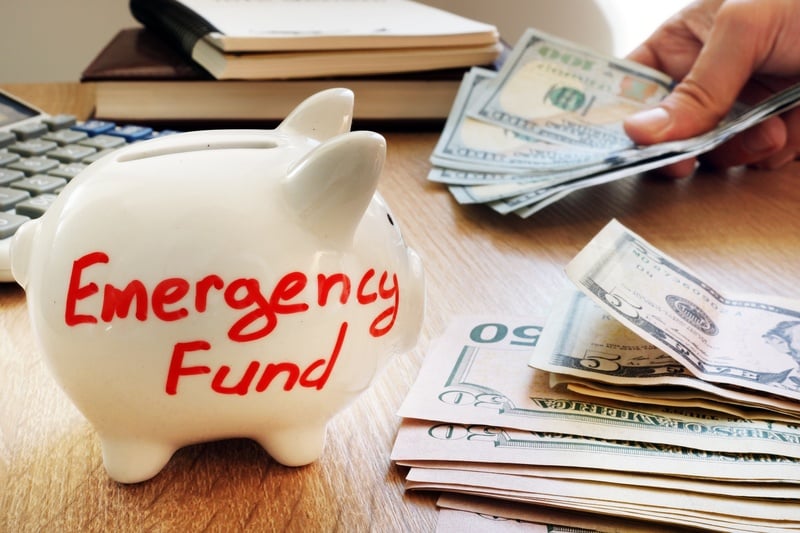5 Reasons to Build an Emergency Fund ASAP
Everything could be okay right at this moment. You have enough money in the bank, both you and your partner could have good jobs, and the two of you...

The number one tip you hear again and again from financial experts is start an emergency fund. This typically means having money in a savings account that is equal to three to six months of your income. If you have no money saved, this can seem like an overwhelming task to accomplish, and it is admittedly not going to happen overnight. However, there are easy and incremental steps you can take to start building your emergency savings fund now, so you are more prepared for your future.

The very first step to building your emergency savings fund is to open a separate savings account that you do not touch for any reason, except financial emergencies. This may mean opening a savings account at a different financial institution than your current credit union or bank so you cannot easily access the money. The savings account you open can be a traditional savings account, but you may want to consider a prize-linked savings account to help you start your emergency fund. Whatever type of savings account you choose for your emergency fund make sure you leave it alone so it can start building up.
Once you have your emergency savings account opened it will help you stay focused if you set a goal for when you want to have your emergency fund fully funded. However, make sure your goal is realistic and attainable. Otherwise, you can quickly become frustrated and give up. Don’t set yourself up for failure before you’ve even started.
Goal Setting Example: If you earn 2,500 a month, three months’ worth of savings would be $7,500. Now let’s assume you want to have your emergency savings account fully funded with 12 months, that’s an aggressive goal. Depending upon your other financial obligations that might be doable, but you would need to set aside $625 a month to reach that goal. A more realistic goal might be to plan to continue to save every month for four years (it goes by faster than you think), meaning you would be saving about $150 a month. If you get paid bi-weekly, that’s only $75 a pay check. That is a much more realistic and attainable savings goal.
The next step to building your emergency savings account is to start putting money into it. The best way to build up your fund quickly is to be consistent with depositing money into your new savings account. An easy, foolproof way to be consistent is to set up an automatic deposit or transfer into the account every time you get paid.
Going back to the earlier example, you could have $75 out of each paycheck directly deposited into your emergency savings account. This way you’ll never see the money in your checking account, and you’ll never get a chance to miss it. If you’re unable to directly deposit your paycheck into different accounts, you can always have your financial institution help you set up an automatic transfer to move the $75 from your checking into your emergency savings account every payday.
This is the easiest step of all. Once you have your new savings account open and automated your regularly occurring deposits into the account, leave it alone. Let it grow and grow. Over time, as you receive raises, you will want to consider increasing the amount you are putting into your emergency savings account. After all, your goal is to have three to six months of your current income saved.
Additionally, if you received any bonuses or tax refunds during the year, you might want to save at least a portion, if not all, of those additional funds into your emergency savings account. Referring back to the earlier example once again, if you received a $1,000 bonus, depositing that bonus into your emergency fund will get you to your $7,500 savings goal about 6 months sooner.
Once you have made the choice to start saving for your future, building up your emergency savings fund should be your first goal. This fund will keep you financially sound should you lose your job or have seriously medical problems or home-ownership emergencies. Having a fully funded emergency account may not happen overnight, but you can make great progress simply by being consistent and automating your savings.

Everything could be okay right at this moment. You have enough money in the bank, both you and your partner could have good jobs, and the two of you...

Ask any financial expert what you need to do to become financially successful, and they’ll tell you one of the first steps is to set up an emergency...

Saving money can feel like trying to hold water in your hands—especially when every paycheck is already spoken for and surprise expenses pop up like...